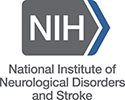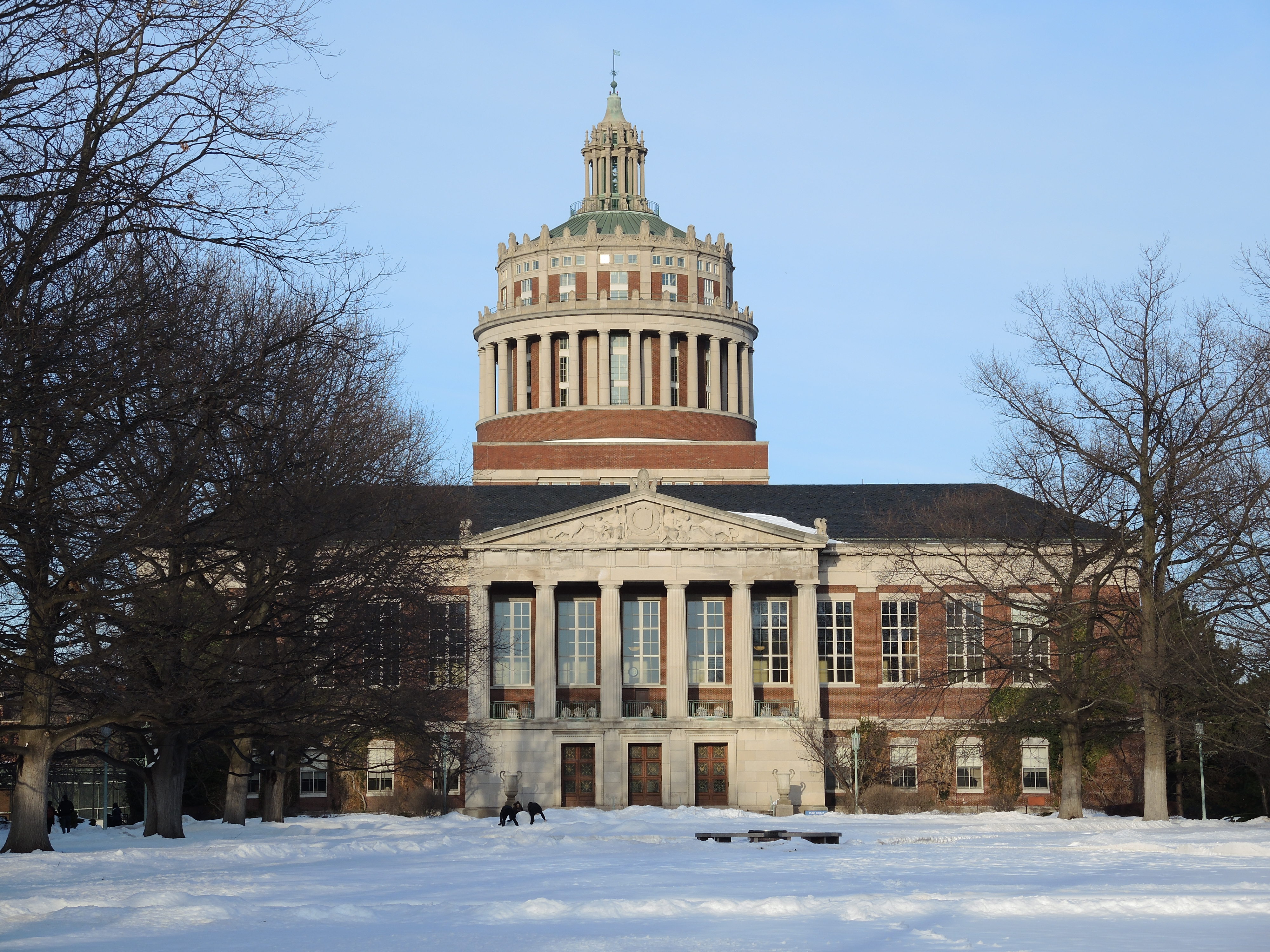|
Rare Diseases Clinical Research Network
The Rare Diseases Clinical Research Network (RDCRN) is an initiative of the Office of Rare Diseases Research (ORDR). RDCRN is funded by the ORDR, the National Center for Advancing Translational Sciences and collaborating institute centers. The RDCRN is designed to advance medical research on rare diseases by providing support for clinical studies and facilitating collaboration, study enrollment and data sharing. Through the RDCRN consortia, physician scientists and their multidisciplinary teams work together with patient advocacy groups to study more than 200 rare diseases at sites across the nation. Established by Congress under the Rare Diseases Act in 2002, the RDCRN has included more than 350 sites in the United States and more than 50 in 22 other countries. To date, they have encompassed 237 research protocols and included more than 56,000 participants in studies ranging from immune system disorders and rare cancers to heart and lung disorders, brain development diseases and mo ... [...More Info...] [...Related Items...] OR: [Wikipedia] [Google] [Baidu] |
Office Of Rare Diseases Research
The Office of Rare Diseases Research is a division of the National Center for Advancing Translational Sciences (NCATS) that oversees the Rare Diseases Clinical Research Network and Genetic and Rare Diseases Information Center. History The Office of Rare Diseases Research was established in 1993 within the Office of the Director of the NIH. Its responsibilities were mandated by statute by the Rare Diseases Act of 2002 The Rare Disease Act of 2002 is a law passed in the United States that establishes the statutory authorization for the Office of Rare Diseases as a federal entity able to recommend a national research agenda, coordinate research, and provide educ .... In 2011, the office became part of the newly created NCATS. ORDR is currently headed by Dr. Anne R. Pariser, who took over the position in February 2018. References {{reflist National Institutes of Health ... [...More Info...] [...Related Items...] OR: [Wikipedia] [Google] [Baidu] |
National Institute Of Neurological Disorders And Stroke
The National Institute of Neurological Disorders and Stroke (NINDS) is a part of the U.S. National Institutes of Health (NIH). It conducts and funds research on brain and nervous system disorders and has a budget of just over US$2.03 billion. The mission of NINDS is "to reduce the burden of neurological disease—a burden borne by every age group, every segment of society, and people all over the world". NINDS has established two major branches for research: an extramural branch that funds studies outside the NIH, and an intramural branch that funds research inside the NIH. Most of NINDS' budget goes to fund extramural research. NINDS' basic science research focuses on studies of the fundamental biology of the brain and nervous system, genetics, neurodegeneration, learning and memory, motor control, brain repair, and synapses. NINDS also funds clinical research related to diseases and disorders of the brain and nervous system, e.g. AIDS, Alzheimer's disease, epilepsy, muscular dys ... [...More Info...] [...Related Items...] OR: [Wikipedia] [Google] [Baidu] |
Rare Diseases Clinical Research Network Contact Registry
The Rare Diseases Clinical Research Network (RDCRN) Contact Registry is a patient contact registry started in 2004 and sponsored by the National Institutes of Health (NIH). The RDCRN Contact Registry collects and stores the contact information of people who want to participate in RDCRN-sponsored research or learn more about RDCRN research. It connects patients with researchers in order to advance rare disease research. The Rare Diseases Clinical Research Network (RDCRN) is a U.S.-based research network funded by the NIH. It fosters research to better understand, diagnose, and treat rare diseases. Its 20 consortia—teams of scientists, physicians, and patients—each study a group of related rare diseases. Established by Congress under the Rare Diseases Act of 2002, the RDCRN is an initiative of the Office of Rare Diseases Research at the NIH's National Center for Advancing Translational Sciences. Future research may produce helpful information for those with rare diseases. Individ ... [...More Info...] [...Related Items...] OR: [Wikipedia] [Google] [Baidu] |
National Institute Of Arthritis And Musculoskeletal And Skin Diseases
The National Institute of Arthritis and Musculoskeletal and Skin Diseases (NIAMS) is one of the institutes and centers that make up the National Institutes of Health, an agency of the United States Department of Health and Human Services (HHS). NIH is the primary federal agency that conducts and supports basic, clinical and translational medical research. The institute investigates the prevention, diagnosis, causes, treatments and cures for both common and rare diseases. Mission NIAMS' mission is to support the research of arthritis, musculoskeletal and skin diseases.The institute also disseminates information on research progress in these diseases. NIAMS supports and conducts basic, clinical, translational and epidemiologic research and research training at universities and medical centers. The institute also conducts and supports basic research on the normal structure and function of bones, joints, muscles, and skin. Basic research involves a wide variety of scientific disc ... [...More Info...] [...Related Items...] OR: [Wikipedia] [Google] [Baidu] |
National Institute Of Dental And Craniofacial Research
The National Institute of Dental and Craniofacial Research (NIDCR) is a branch of the U.S. National Institutes of Health. The institute aims to improve the oral, dental, and craniofacial health through research and the distribution of important health information to the American people. History In 1931, the United States Public Health Service established a Dental Hygiene Unit at the National Institutes of Health. Designated as the first dental research worker, Dr. H. Trendley Dean studied the communities affected by the oral disease known as mottled enamel. Following the implementation of a water fluoridation trial in Grand Rapids, Michigan, the National Institute of Dental Research (NIDR), was established by President Harry S. Truman on June 24, 1948. The first grants and fellowships that supported dental research were awarded the following year. In an effort to expand the NIDR, plans to finance the construction of a building for the institute were approved by President Dwigh ... [...More Info...] [...Related Items...] OR: [Wikipedia] [Google] [Baidu] |
National Institute Of Allergy And Infectious Diseases
The National Institute of Allergy and Infectious Diseases (NIAID, ) is one of the 27 institutes and centers that make up the National Institutes of Health (NIH), an agency of the United States Department of Health and Human Services (HHS). NIAID's mission is to conduct Basic research, basic and applied research to better understand, treat, and prevent Infectious disease, infectious, Immune disorder, immunologic, and Allergy, allergic diseases. NIAID has on-campus Laboratory, laboratories in Maryland and Hamilton, Montana, and funds research conducted by scientists at institutions in the United States and throughout the world. NIAID also works closely with partners in academia, industry, government, and non-governmental organizations in multifaceted and multidisciplinary efforts to address emerging health challenges such as the pandemic H1N1/09 virus, H1N1/09 pandemic and the COVID-19 pandemic. History NIAID traces its origins to a small laboratory established in 1887 at the Marine ... [...More Info...] [...Related Items...] OR: [Wikipedia] [Google] [Baidu] |
National Institute Of Diabetes And Digestive And Kidney Diseases
The National Institute of Diabetes and Digestive and Kidney Diseases (NIDDK) is part of the United States National Institutes of Health, which in turn is part of the Department of Health and Human Services. NIDDK is approximately the fifth-largest of the 27 NIH institutes. The institute's mission is to support research, training, and communication with the public in the topic areas of "diabetes and other endocrine and metabolic diseases; digestive diseases, nutritional disorders, and obesity; and kidney, urologic, and hematologic diseases". As of 2021, the Director of the institute is Griffin P. Rodgers, who assumed the position on an acting basis in 2006 and on a permanent basis in 2007. Mission The mission of the National Institute of Diabetes and Digestive and Kidney Diseases (NIDDK) is to conduct and support medical research and research training and to disseminate science-based information on diabetes and other endocrine and metabolic diseases; digestive diseases, nutritiona ... [...More Info...] [...Related Items...] OR: [Wikipedia] [Google] [Baidu] |
National Heart, Lung, And Blood Institute
The National Heart, Lung, and Blood Institute (NHLBI) is the third largest Institute of the National Institutes of Health, located in Bethesda, Maryland, United States. It is tasked with allocating about $3.6 billion in FY 2020 in tax revenue to advancing the understanding of the following issues: development and progression of disease, diagnosis of disease, treatment of disease, disease prevention, reduction of health care disparities within the American population, and advancing the effectiveness of the US medical system. NHLBI's Director is Gary H. Gibbons (2012–present). Operation In 1948, the National Heart Act established the National Heart Institute and the National Advisory Heart Council. The intramural research program was established a year later in 1949. In 1969, the National Heart Institute was renamed the National Heart and Lung Institute, and the scope of the institute was expanded. In 1976, it was given its current name, the National Heart, Lung, and Blood Insti ... [...More Info...] [...Related Items...] OR: [Wikipedia] [Google] [Baidu] |
National Institute Of Child Health And Human Development
The ''Eunice Kennedy Shriver'' National Institute of Child Health and Human Development (NICHD) is one of the National Institutes of Health (NIH) in the United States Department of Health and Human Services. It supports and conducts research aimed at improving the health of children, adults, families, and communities, including: *Reducing infant deaths *Promoting healthy pregnancy and childbirth *Investigating growth and human development *Examining problems of birth defects and intellectual and developmental disabilities *Understanding reproductive health *Enhancing function across the lifespan through rehabilitation research History The impetus for NICHD came from the Task Force on the Health and Well-Being of Children, convened in 1961 and led by Dr. Robert E. Cooke, a senior medical advisor to President John F. Kennedy. Eunice Kennedy Shriver also served on the task force, which reported that more research was needed on the physical, emotional, and intellectual growth of chil ... [...More Info...] [...Related Items...] OR: [Wikipedia] [Google] [Baidu] |
Maria New
Maria Iandolo New is a professor of Pediatrics, Genomics and Genetics at Icahn School of Medicine at Mount Sinai in New York City. She is an expert in congenital adrenal hyperplasia (CAH), a genetic condition affecting the adrenal gland that can affect sexual development. Medical education New received her undergraduate degree from Cornell University in Ithaca, New York, in 1950, and her M. D. from the Perelman School of Medicine at the University of Pennsylvania in Philadelphia, in 1954. She completed an internship in medicine at Bellevue Hospital in New York, followed by a residency in pediatrics at the New York Hospital. From 1957 to 1958 she studied renal functioning under a fellowship from the National Institutes of Health (NIH). She was a research pediatrician to the Diabetic Study Group of the Comprehensive Care Teaching Program at the New York Hospital-Cornell Medical Center from 1958 to 1961, and had a second NIH fellowship under Ralph E. Peterson from 1961 to 1964, to s ... [...More Info...] [...Related Items...] OR: [Wikipedia] [Google] [Baidu] |
National Center For Advancing Translational Sciences
The National Center for Advancing Translational Sciences (NCATS) was established in 2012 and is located in Bethesda, Maryland. NCATS is one of 27 institutes and centers of the US National Institutes of Health (NIH), an agency of the US Department of Health and Human Services. The mission of NCATS is to transform scientific discoveries into new treatments and cures for disease that can be delivered faster to patients. The budget provided to NCATS for fiscal year 2018 is $557,373,000. History NCATS was created in December 2011 by the Consolidated Appropriations Act, 2012. The center was created from a number of existing NIH programs: * Clinical and Translational Science Award program * Components of the Molecular Libraries Program * Therapeutics for Rare and Neglected Diseases * RAID renamed Bridging Interventional Development Gaps * Office of Rare Diseases Research * NIH–FDA Regulatory Science Initiative * Cures Acceleration Network (CAN) Divisions NCATS is organized into ... [...More Info...] [...Related Items...] OR: [Wikipedia] [Google] [Baidu] |
University Of Rochester
The University of Rochester (U of R, UR, or U of Rochester) is a private research university in Rochester, New York. The university grants undergraduate and graduate degrees, including doctoral and professional degrees. The University of Rochester enrolls approximately 6,800 undergraduates and 5,000 graduate students. Its 158 buildings house over 200 academic majors. According to the National Science Foundation, Rochester spent more than $397 million on research and development in 2020, ranking it 66th in the nation. With approximately 28,000 full-time employees, the university is the largest private employer in Upstate New York and the 7th largest in all of New York State. The College of Arts, Sciences, and Engineering is home to departments and divisions of note. The Institute of Optics was founded in 1929 through a grant from Eastman Kodak and Bausch and Lomb as the first educational program in the US devoted exclusively to optics, awards approximately half ... [...More Info...] [...Related Items...] OR: [Wikipedia] [Google] [Baidu] |



.jpg)
